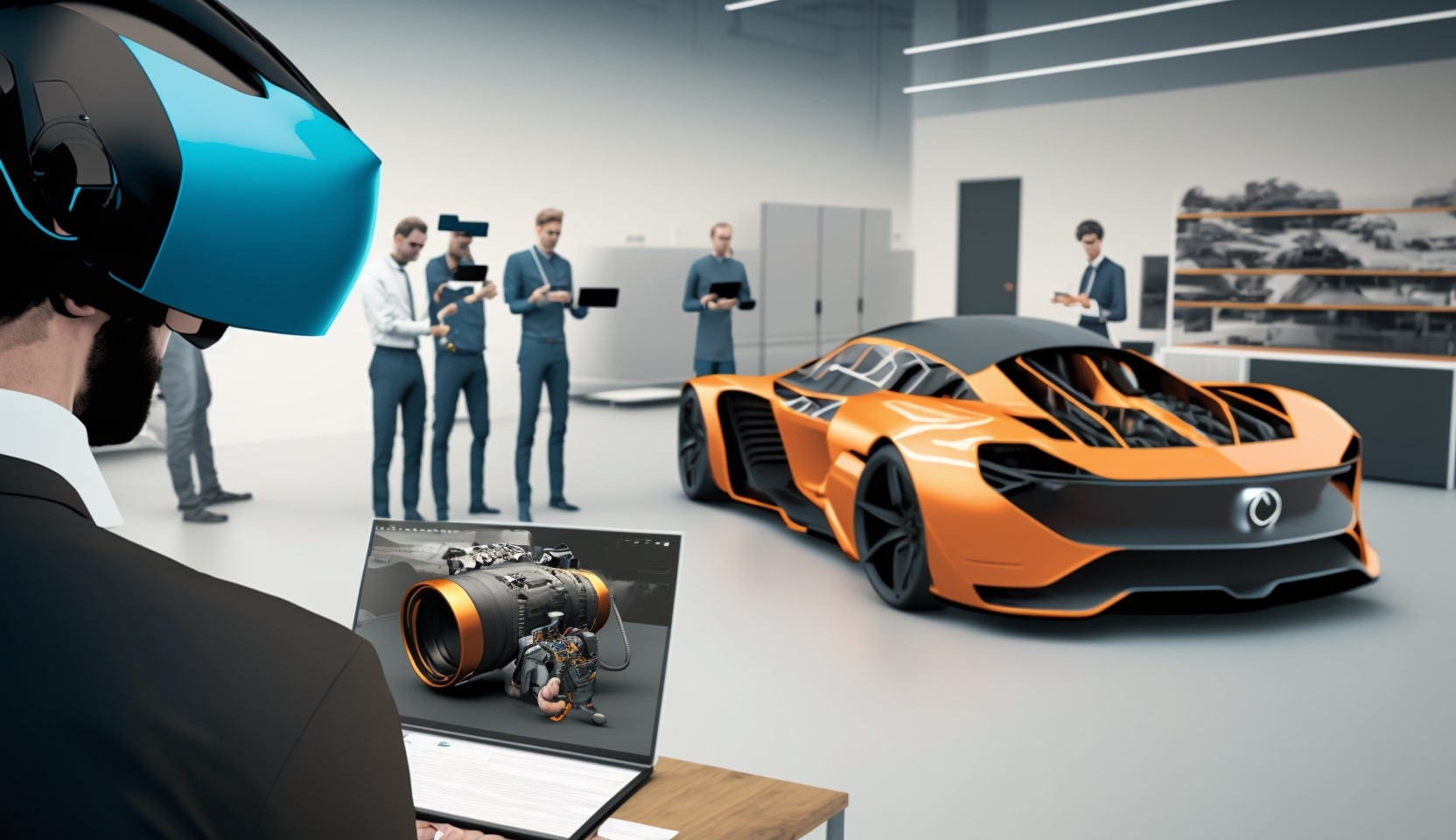Virtual Reality (VR) is an innovative technology that has the potential to revolutionize the automotive industry. By using VR, car manufacturers, and dealerships can offer their customers an immersive and engaging experience, whether it be through virtual test drives, interactive showrooms, or personalized vehicle customization.
VR technology enables car buyers to explore and interact with a vehicle in a virtual environment, allowing them to experience the look, feel, and functionality of a car without having to physically be in it. This can be particularly useful for customers who live far from a dealership or who may be hesitant to visit a physical showroom.
Car manufacturers can also use VR for design and customization, allowing customers to visualize different color and accessory options before making a purchase. VR can also be used for employee training, providing a realistic and immersive experience for employees to practice in a safe and controlled environment.
Overall, VR has the potential to enhance the buying and selling process for both customers and car manufacturers. As technology continues to evolve, we can expect to see more and more automotive companies adopting VR to provide their customers with an innovative and engaging experience.
Virtual Reality (VR) is an exciting technology that has been gaining popularity in recent years. One of the industries that can benefit greatly from VR is the automotive industry. In this blog, we will explore how VR can revolutionize the automotive industry.
The automotive industry is constantly evolving and innovating to meet the demands of consumers. VR technology can help this industry to further innovate and enhance the experience of car buyers.
By shifting prototyping, showcasing, and test driving to the virtual world, virtual reality software enables lowering R&D and production costs, improving sales, and reducing driving risks. The global market for virtual reality in the automotive sector was worth $759.3 million in 2019 and is expected to reach $14,727.9 million by 2027 at a CAGR of 45.1%.
“It would be nice if we could design a virtual reality in Hyperbolic Space, and meet each other there.”
– Donald Knuth Tweet

Here are some ways VR can be used in the automotive industry:
- Virtual Test Drives:
VR can provide an immersive experience for car buyers, allowing them to take virtual test drives of different car models. This can be particularly useful for customers who may not have access to a physical showroom or who may be hesitant to visit a dealership due to the COVID-19 pandemic. - Design and Customization:
VR can also be used in the design and customization of cars. Customers can use VR to see how different colors, finishes, and accessories would look on their car before making a purchase. This can save time and money for both the customer and the dealership. - Employee Training:VR can also be used for employee training in the automotive industry. This can include training on new car models, safety protocols, and customer service. VR can provide a realistic and immersive experience for employees, allowing them to practice in a safe and controlled environment.
- Virtual Showrooms: VR can also be used to create virtual showrooms, allowing customers to view and interact with cars in a virtual environment. This can be particularly useful for customers who live far from a physical showroom or who prefer to shop online.
- Marketing and Advertising:VR can also be used for marketing and advertising purposes in the automotive industry. Companies can create VR experiences that showcase their latest models and technology. This can help to generate buzz and excitement around new releases.
The self-driving automobile is currently the automotive industry’s most significant technological advancement. There has been steady progress in this direction, and during the past few years, a number of open trials have been conducted. Understandably, the safety of such driverless cars is a huge problem. Because to the fact that the vehicle must be capable of handling any circumstance, the research and development (R&D) procedure for it is exceedingly difficult.
“The thing that excites me about these informational technologies is I think we are going to be able to use virtual reality to show each other the insides of our own heads.”
– Terence McKenna Tweet

Conclusion:-
In conclusion, Virtual Reality (VR) is an innovative technology that has the potential to transform the automotive industry. By providing customers with an immersive and engaging experience, VR can enhance the car-buying process and improve customer satisfaction. Car manufacturers and dealerships can also use VR for design and customization, employee training, and marketing and advertising purposes.
As technology continues to evolve, we can expect to see more and more automotive companies adopting VR to provide their customers with an innovative and personalized experience. Overall, VR has the potential to drive innovation and revolutionize the automotive industry for years to come.


